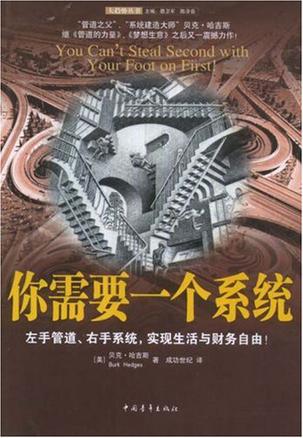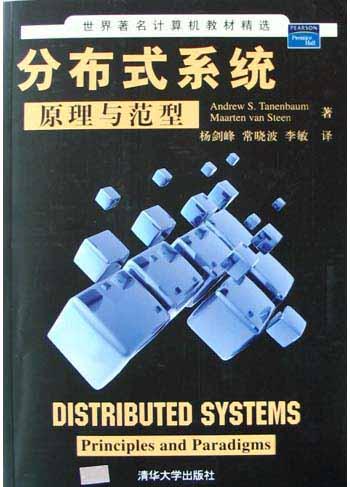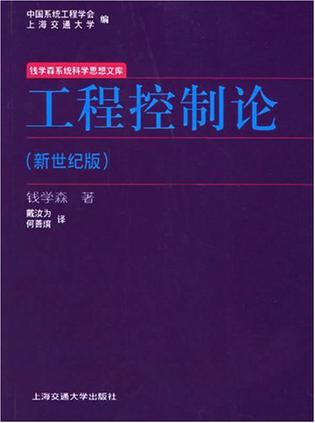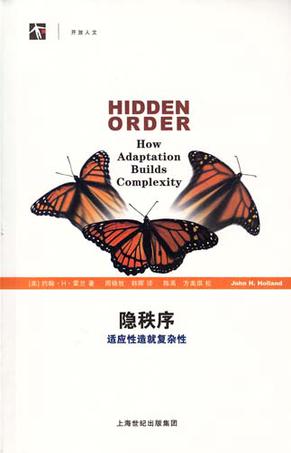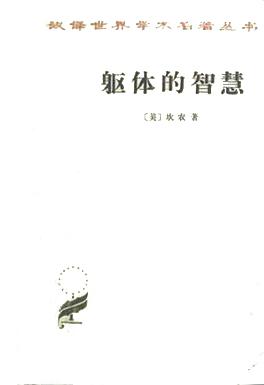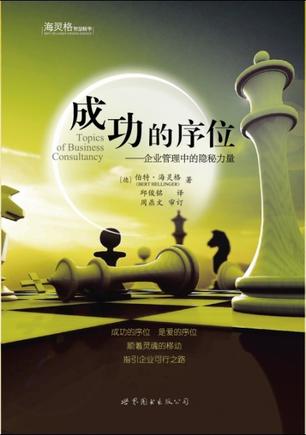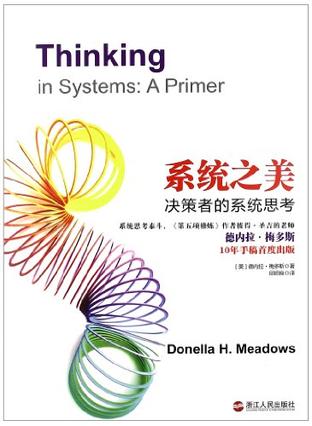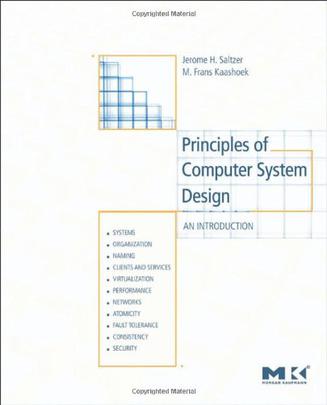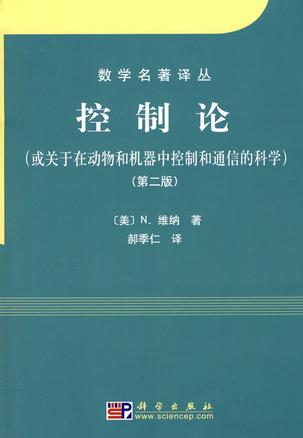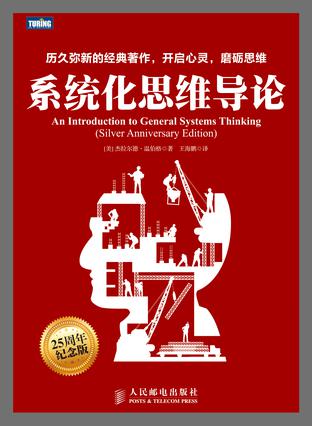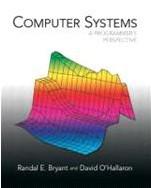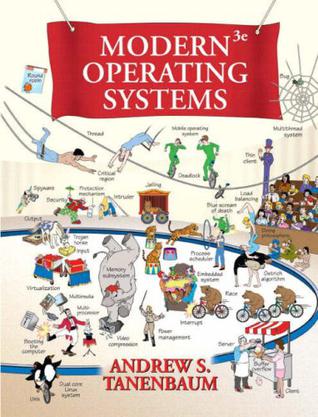欢迎来到相识电子书!
标签:系统
-
你需要一个系统
《你需要一个系统》是“管道之父”、“系统建造大师”贝克·哈吉斯继《管道的力量》、《梦想生意》之后又一震撼九作!左手管道、右手系统,实现生活与财务自由!正像贝克·哈吉斯在字里行间所说的那样:去进入其中吧!去成就发展吧!去体现价值吧!去为社会贡献更多吧! -
论系统工程
《论系统工程(新世纪版)》的著者是一个群体,因为本书中除有钱学森与他人合作写成的文章外,还按照钱学森的意愿收入了其他一些人的文章的缘故。《论系统工程(增订本)》编辑时,书中体例是按钱学森意见确定下来的。故本书新世纪版出版时,除对书中文字的差错做更正,并注明各篇的写作时间、出处外,其他的不做改动,以体现原书风貌。 -
分布式系统原理与范型
本书是Tanenbaum先生所著的《分布式操作系统》的修订版,是分布式系统的权威教材。全书分为两部分:原理和范型。第一部分详细讨论了分布式系统的原理、概念和技术,其中包括通信、进程、命名、同步、一致性和复制、容错以及安全。第二部分给出了一些实际的分布式系统:基于对象的分布式系统、分布式文件系统、基于文档的分布式系统以及基于协作的分布式系统,介绍了一些实际系统的设计思想和实现技术。全书结构清晰,内容全面经典,系统性与先进性并茂。 本书适用对象广泛。对于学习分布式计算的本科生和研究生,本书是优选教材。对于从事分布式计算研究和工程应用的科研人员和工程技术人员,本书也是一本优秀的基础性读物。 -
工程控制论
《工程控制论(新世纪版)》的目的是把一般性概括性的理论和实际工程经验很好地结合起来,对工程技术各个系统的自动控制和自动调节理论作一个全面的探讨。它一方面奠定了工程控制论这门技术科学的理论基础,另一方面指出这门新学科今后的几个研究方向。 《工程控制论(新世纪版)》最初是用英文写的。现在的汉文版是在钱学森先生的指导下,翻译英文版并且参照俄文译本略加修改和补充而成。 《工程控制论(新世纪版)》曾荣获中国科学院1956年度一等科学奖金。 -
隐秩序
《隐秩序:适应性造就复杂性》内容简介:像艾滋病这样的疾病为何能够摧毁免疫系统7像纽约、东京这样的大城市,如何能够不问断地保障食品、医疗、服饰和数百万种居民必需品的供给7这类高度复杂系统的运作仍然是一个谜。但是通过霍兰及其同事在圣菲研究所和密歇根大学的工作,现在已经接近找到一种解答。 作为遗传算法之父和复杂性科学的先驱者之一,霍兰从一开始就处于复杂适应系统(CAS)这一新兴研究领域的中心。 这部里程碑式著作为这一崭新领域首次提供了一种协调一致的综合,展示了霍兰的独特洞见。《隐秩序:适应性造就复杂性》强调寻找支配CAS行为的一般原理,注重扩展众多科学家的直觉。书中提供了一个适用于全部CAS的计算机模型。霍兰通过描述我们能够做什么,总结了如何增强对CAS的理论认识。他提出的若干理论方法,可以指导人们对付耗尽资源、置我们世界于危险境地的棘手的CAS问题。 -
混序:维萨与组织的未来形态
几乎无人知道Visa是世界上最大的商业组织。它的营业额是沃尔玛的十倍;保守一点讲,其市场价值是通用电器的两倍多。世界上最大的商业组织怎么能同时又是世界上最隐形的一个商业机构?维萨相对隐形的原因与其成功的原因是同等重要的。在本书中,Visa的创始人,第一任CEO迪伊.霍克带领读者分享该组织成功的奥秘。 -
系统论
《系统论:系统科学哲学》立足于一般系统论、信息论、控制论、耗散结构论、协同论、超循环理论、突变论、混沌理论和分形理论等系统科学理论,探索了系统科学古今中外的四方面来源,考察了从宇宙、生命、精神、生态到社会五大系统的基本特征,概括出八条系统论原理和五条系统论规律,提出了一个完整的系统论体系。《系统论:系统科学哲学》气势宏大,立意深刻,论述严谨,富有时代感。《系统论:系统科学哲学》使用的是世界图书出版公司2009年版本。 -
协同学
作者基于如下的认识出发:在无生命物质中,新的、井然有序的结构也会从混沌中产生出来,并随着恒定的能量供应而得以维持。书中从物理学和化学方面,提供了这种发现的极富启发性的实例。 -
成功的序位
海灵格大师的另一力作,《海灵格成功系列》的第三本。本书将企业问题合理转换成“爱的序位”问题,为企业指引可行之路。书中还有大量企业管理案例,适合企业管理咨询师、心理学爱好者,以及企业管理者阅读和学习。 -
再见耶稣
《再见耶稣:海灵格谈成功的思维》在毫无任何意图下发生了,在某些片刻,我感受到驱力的差使,那时就算手上有其他当务之急,我却没办法关注。最后我让步了,坐下来,摆张纸在我面前,终于愿意开始动笔。通常我不知道该写些什么,不过突然间就想起某个字,于是我提笔写下,完全不知道会写到哪里。从第一句话开始写起,然后下一句接着出现,我不停写着,突然问话语流泻,一笔接着一画、一行接着一行。 有时这些想法是如此难以置信,超越了我的日常思维模式,超越了我原本良知的极限,不过它们仍旧如此站得住脚,对我的灵魂、对我内在的本源来说如此真实,我感觉到自己被无限的心灵承载着,它带着我前进、差使我。 这是一本静心冥想的书,一本初级的书,因为真理永远在行进着,永不停歇,它是爱的进行式。、“爱的想法”将会成功,永远如此。 -
人工科学
本书是诺贝尔经济学奖得主司马贺的代表作之一,是1996年修订出版的第三版的中译本。第三版增加了全新的一章“复杂性面面观”,修改了文字内容并更新了部分数据。 作者率先构造出“人工科学”的概念,据以将经济学、思维心理学、学习科学、设计科学、管理学、复杂性研究等领域贯穿联系起来,使人获得很多启迪。本书对传统思维提出挑战,指出人工智能所期望达到的领域,揭示了人工性和层级对于复杂性的意义,从多个领域说明人工科学何以是可能的,并试图说明它的性质。本书的基本主题是:物质符号系统具备必要和充分的手段来采取智能行动。 -
系统之美
[内容简介] 《系统之美》是一本简明扼要的系统思考入门指南,也是认识复杂动态系统的有力工具,帮助大家提高理解和分析身边系统的能力。小到个人问题,大到全球性复杂挑战,本书都可以为你提供睿智的解答和洞察。 作为一本实用的入门指南,本书不仅讲解了系统动力学的基本概念、列举了常见的系统结构,还详细陈述了复杂系统的3大特征、8大陷阱与对策、12大变革方式以及15大生存法则。作者把系统思考从计算机和方程式的世界中解脱出来,以各种真实的案例,阐述了系统思考如何应用于各种现实问题,向读者展示了如何提升和应用系统思考技能——这一项普遍被认为是21世纪全球领导力的核心技能。 作者认为,系统思考将有助于我们发现问题的根本原因,看到多种可能性,从而让我们更好地管理、适应复杂性挑战,把握新的机会,去打造一个完全不同的自我和一个崭新的世界。 一本书,引领个人、组织与社会变革的先河,促使人们觉醒,改变看待这个世界和系统的方式,以此改变当今社会的发展进程,让大家在这个充满各种复杂系统的世界里更好地生活。 [编辑推荐] 本书作者德内拉•梅多斯,是世界上最伟大的系统思考大师之一,师从系统动力学创始人杰伊•福瑞斯特,是知名的“世界模型Ⅲ”主创人员,也是 “学习型组织之父”、《第五项修炼》作者彼得•圣吉的老师。 系统思考泰斗10年手稿首度出版,帮助大家提高理解和分析身边系统的能力,更积极地投身于各种变化,用新的方式去管理、决策,并在这个充满各种复杂系统的世界里更好地生活。 书中详细陈述了系统的3大特征、8大陷阱与对策、12大变革方式以及15大生存法则,是一部深入浅出地启迪人们系统思考的经典之作。 一本书,引领社会观念变革的先河,促使人们觉醒,改变看待这个世界和系统的方式,以此改变当今社会的发展进程。 本书写的是世界的复杂性,也献给世界的复杂性。系统思考是你应对复杂性挑战、做出睿智决策、与复杂世界共舞的核心技能。 跟随作者的脚步,你将惊叹于系统之美、系统之奇、系统之危与机、系统之杠杆点,并最终与系统共舞! -
失败的逻辑
本书作者德尔纳用他自己编制的引人入胜的计算机模拟程序,揭示了我们思维中的这些缺陷。他的例子――有时是开心的,有时是吓人的――和他那“梳脑”思维实验,使我们认识到应该如何处理复杂问题。这些实例使本书成为一件矫正工具,一种明智的规划和决策指南,使商业经理、决策者以及面临由此及彼日常挑战的每一个人的思维技巧更加敏锐。本书将改变我们构思变化的方法本身,使我们对成功之路的判断能力得到提高。 -
Principles of Computer System Design
This text identifies, examines, and illustrates fundamental concepts in computer system design that are common across operating systems, networks, database systems, distributed systems, programming languages, software engineering, security, fault tolerance, and architecture. Through carefully analyzed case studies from each of these disciplines, it demonstrates how to apply these concepts to tackle practical system design problems. To support the focus on design, the text identifies and explains abstractions that have proven successful in practice such as, remote procedure call, client/service organization, file systems, data integrity, consistency, and authenticated messages. Most computer systems are built using a handful of such abstractions. The text describes how these abstractions are implemented, demonstrates how they are used in different systems, and prepares the reader to apply them in future designs. Features: Concepts of computer system design guided by fundamental principles. Cross-cutting approach that identifies abstractions common to networking, operating systems, transaction systems, distributed systems, architecture, and software engineering. Case studies that make the abstractions real: naming (DNS and the URL); file systems (the UNIX file system); clients and services (NFS); virtualization (virtual machines); scheduling (disk arms); security (TLS). Numerous pseudocode fragments that provide concrete examples of abstract concepts. Extensive support. The authors and MIT OpenCourseWare provide on-line, free of charge, open educational resources, including additional chapters, course syllabi, board layouts and slides, lecture videos, and an archive of lecture schedules, class assignments, and design projects. -
控制论
《控制论(或关于在动物和机器中控制和通信的科学)第2版》是由科学出版社出版的。 -
系统化思维导论(银年纪念版)
在计算机领域,一部永恒的经典著作,其特点是它在出版5年后依然值得一读。如果书中的内容在首次出版25年后依然是正确的,那么它绝对是一部非凡的巨著。这一标准适用于《系统化思维导论》这本书。本书关注的不仅限于计算机领域,它更多关注的是人们思考的内容,以及如何去思考这些内容。 -
系统化思维导论
本书是软件思想家温伯格 的非凡之作。温伯格作为美国计算机名人堂代表人物,先后著有30多部图书,内容涵盖整个软件开发周期。他的拥趸遍天下,他的书也被奉为必读经典。 这是一本带你读懂思维 的旷世经典,简明的语言,简单的代数,清晰阐明了认识各种项目、产品和组织等系统的新方法。 这是一本极易上手 的思维指南,富有启发性的举例说明、贴切的章后问答与练习,为你提供了面对问题、系统和解决方案时最强大的分析工具。 这是一本适合极广泛人群 阅读的书。无论是科学家、工程师、医生、学生,还是各类组织的领导者、管理者,抑或基层员工,都可以通过本书驱散思考的层层迷雾。 -
Modern Operating Systems
For software development professionals and computer science students, Modern Operating Systems gives a solid conceptual overview of operating system design, including detailed case studies of Unix/Linux and Windows 2000. What makes an operating system modern? According to author Andrew Tanenbaum, it is the awareness of high-demand computer applications--primarily in the areas of multimedia, parallel and distributed computing, and security. The development of faster and more advanced hardware has driven progress in software, including enhancements to the operating system. It is one thing to run an old operating system on current hardware, and another to effectively leverage current hardware to best serve modern software applications. If you don't believe it, install Windows 3.0 on a modern PC and try surfing the Internet or burning a CD. Readers familiar with Tanenbaum's previous text, Operating Systems, know the author is a great proponent of simple design and hands-on experimentation. His earlier book came bundled with the source code for an operating system called Minux, a simple variant of Unix and the platform used by Linus Torvalds to develop Linux. Although this book does not come with any source code, he illustrates many of his points with code fragments (C, usually with Unix system calls). The first half of Modern Operating Systems focuses on traditional operating systems concepts: processes, deadlocks, memory management, I/O, and file systems. There is nothing groundbreaking in these early chapters, but all topics are well covered, each including sections on current research and a set of student problems. It is enlightening to read Tanenbaum's explanations of the design decisions made by past operating systems gurus, including his view that additional research on the problem of deadlocks is impractical except for "keeping otherwise unemployed graph theorists off the streets." It is the second half of the book that differentiates itself from older operating systems texts. Here, each chapter describes an element of what constitutes a modern operating system--awareness of multimedia applications, multiple processors, computer networks, and a high level of security. The chapter on multimedia functionality focuses on such features as handling massive files and providing video-on-demand. Included in the discussion on multiprocessor platforms are clustered computers and distributed computing. Finally, the importance of security is discussed--a lively enumeration of the scores of ways operating systems can be vulnerable to attack, from password security to computer viruses and Internet worms. Included at the end of the book are case studies of two popular operating systems: Unix/Linux and Windows 2000. There is a bias toward the Unix/Linux approach, not surprising given the author's experience and academic bent, but this bias does not detract from Tanenbaum's analysis. Both operating systems are dissected, describing how each implements processes, file systems, memory management, and other operating system fundamentals. Tanenbaum's mantra is simple, accessible operating system design. Given that modern operating systems have extensive features, he is forced to reconcile physical size with simplicity. Toward this end, he makes frequent references to the Frederick Brooks classic The Mythical Man-Month for wisdom on managing large, complex software development projects. He finds both Windows 2000 and Unix/Linux guilty of being too complicated--with a particular skewering of Windows 2000 and its "mammoth Win32 API." A primary culprit is the attempt to make operating systems more "user-friendly," which Tanenbaum views as an excuse for bloated code. The solution is to have smart people, the smallest possible team, and well-defined interactions between various operating systems components. Future operating system design will benefit if the advice in this book is taken to heart. --Pete Ostenson --This text refers to the Hardcover edition. Product Description The widely anticipated revision of this worldwide best-seller incorporates the latest developments in operating systems technologies. The Third Edition includes up-to-date materials on relevant operating systems such as Linux, Windows, and embedded real-time and multimedia systems. Includes new and updated coverage of multimedia operating systems, multiprocessors, virtual machines, and antivirus software. Covers internal workings of Windows Vista (Ch. 11); unique even for current publications. Provides information on current research based Tanenbaum’s experiences as an operating systems researcher. A useful reference for programmers.
热门标签
下载排行榜
- 1 梦的解析:最佳译本
- 2 李鸿章全传
- 3 淡定的智慧
- 4 心理操控术
- 5 哈佛口才课
- 6 俗世奇人
- 7 日瓦戈医生
- 8 笑死你的逻辑学
- 9 历史老师没教过的历史
- 10 1分钟和陌生人成为朋友

